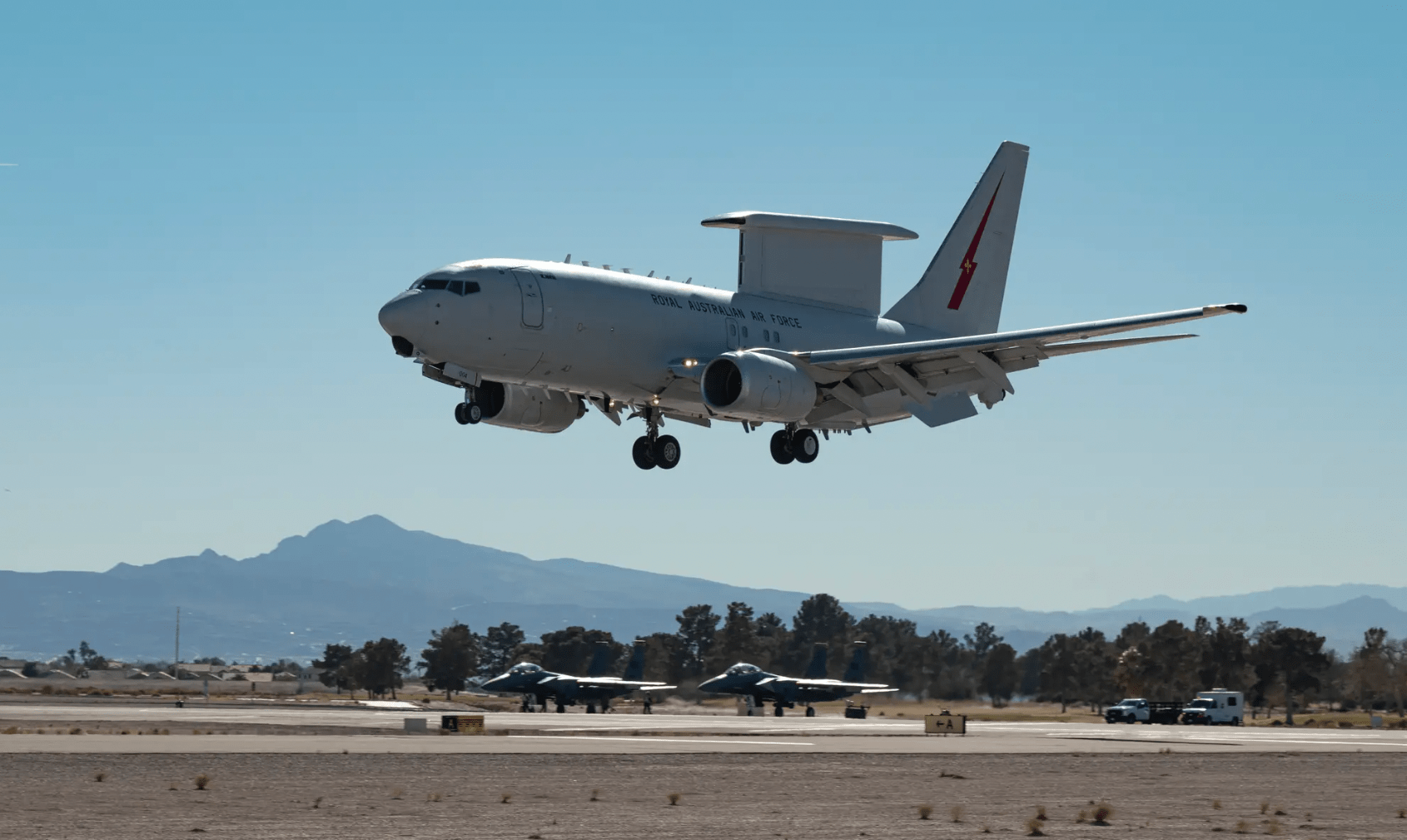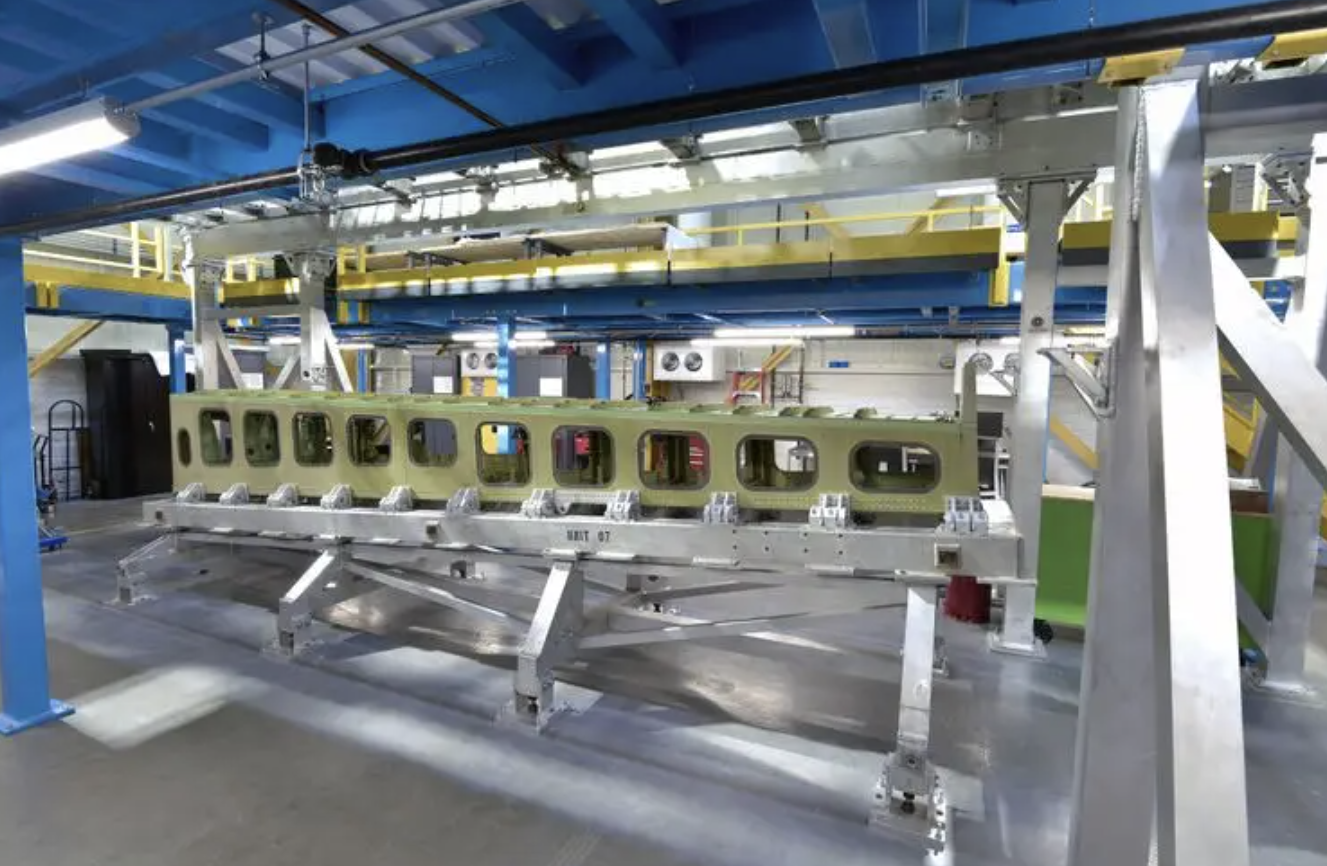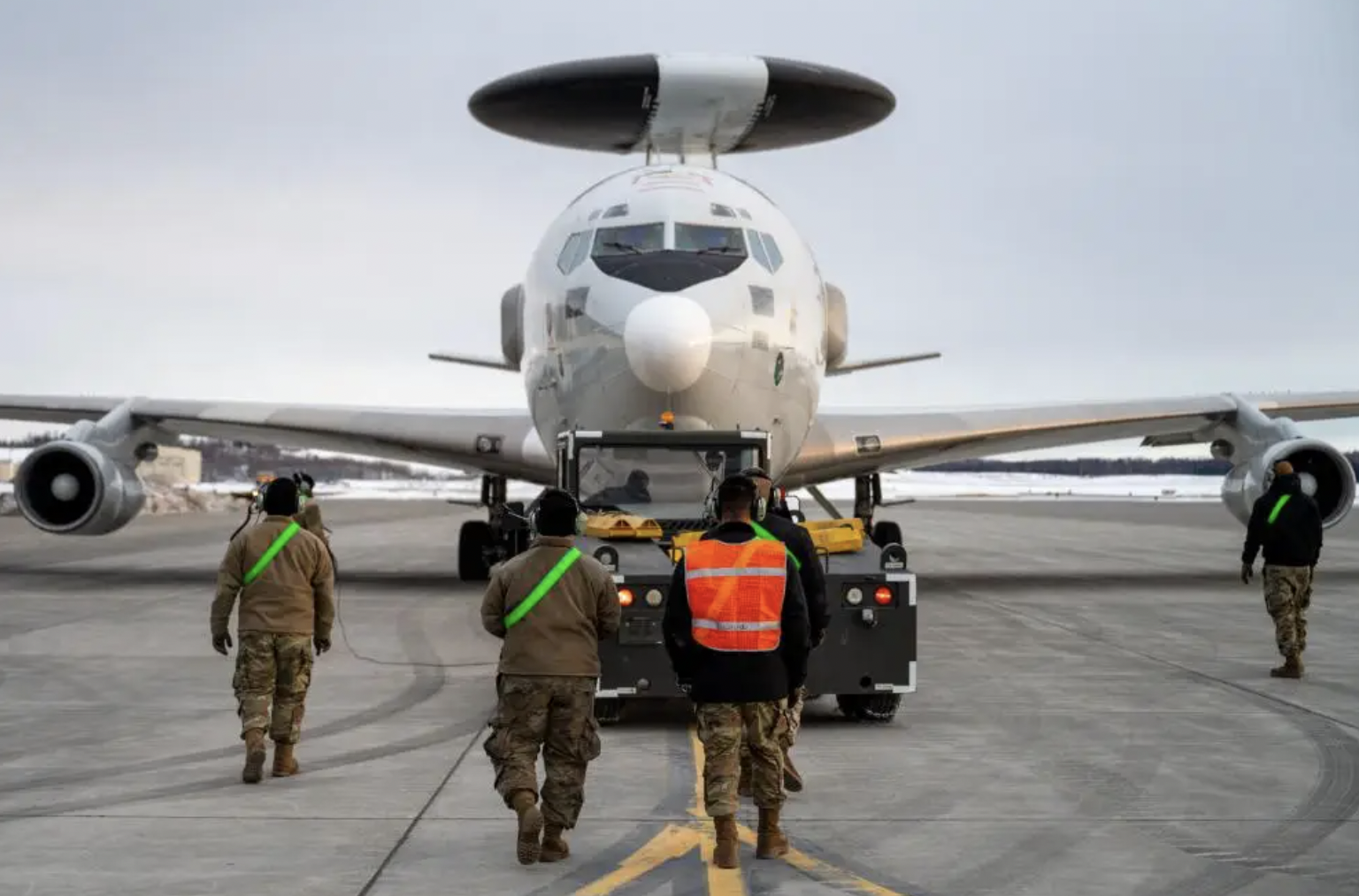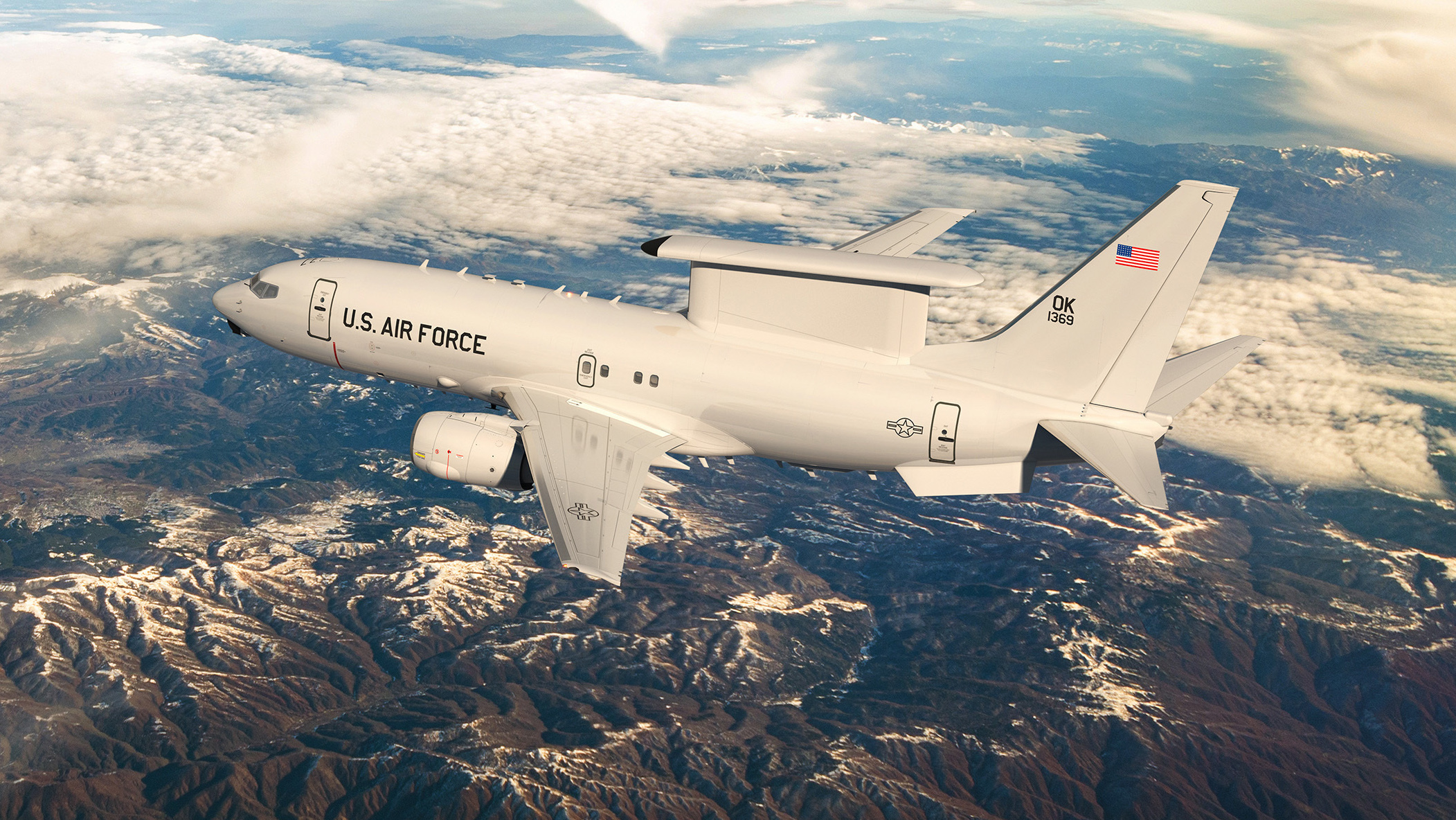Boeing is to kick off work on the U.S. Air Force’s new airborne early warning and control (AEW&C) aircraft, with a contract to develop a version of the E-7 Wedgetail radar plane for the service. The Air Force will use the E-7 to replace at least some of its 31 remaining 707-based E-3 Sentry Airborne Warning And Control System, or AWACS, aircraft, which have been struggling with poor mission-capable rates — the Air Force’s metric that reflects levels of operational readiness.
According to Boeing, under a contract not to exceed $1.2 billion, the manufacturer “will begin development of two new U.S. variants of the E-7 airborne early warning and control (AEW&C) aircraft.” While the wording here suggests two different versions are under development, this actually refers to the first two examples of the U.S. Air Force-standard E-7, built to the same specification, which will serve as “production representative prototype aircraft,” before entering operational service.

“The rapid prototyping program will integrate U.S.-based mission systems into the existing airborne platform to meet DAF [Department of the Air Force] requirements, while simultaneously ensuring interoperability with coalition and allied partners already operating the E-7A,” the Air Force said in a statement.
In its media release, Boeing states that the E-7 “provides a fully integrated, combat-proven, flexible command and control node that delivers multi-domain awareness in the most challenging operational environments. The E-7’s open systems architecture and agile software design enable the aircraft’s capabilities to evolve and remain ahead of future threats.”
“The E-7 is a proven platform,” said Stu Voboril, Boeing’s E-7 program vice president and general manager. “It is the only advanced aircraft that is capable of meeting the U.S. Air Force’s near-term airborne early warning and control requirement while enabling integration across the joint force.”

The contract had been expected ever since the Air Force determined that the E-7 was “the only platform capable of meeting the requirements for the Defense Department’s tactical battle management, command and control and moving target indication capabilities within the timeframe needed to replace the aging E-3.” This came after plenty of previous discussions about buying the Wedgetail, including from Air Force officials.
The April 2022 decision to procure the Wedgetail came after the Air Force had formally announced that it was looking for a replacement for a portion of its E-3s the previous February. The only competitor to the E-7, Saab’s bizjet-based GlobalEye, was rejected.
The centerpiece of the E-7 is the Multi-role Electronically Scanned Array (MESA) sensor, from Northrop Grumman, which provides 360-degree coverage of airborne and maritime threats simultaneously. The advanced electronically scanned technology is at least a generation ahead of the mechanically scanned radar used by the E-3.

According to the Air Force’s 2023 Fiscal Year budget request, the advantages of the MESA include “improved kill-chain effectiveness, enhanced reliability/availability, and reduced operating costs by integrating a modern electronically scanned array sensor on a manned platform. The electronically scanned array is capable of radar beam steering, sector staring and much faster target revisit rates that translate into better target detection and tracking of modern threats well as more robust electronic protection that isn’t possible with the mechanically scanned radar used by E-3 AWACS.”
As well as detecting and tracking targets of various types at long range, the E-7 offers Advanced Battle Management System (ABMS) capabilities, critical to the Pentagon’s ambition to provide more effective long-range ‘kill chains,’ which are seen as a prerequisite of potential future conflicts with peer adversaries, like China.

The E-7 also benefits from a well-established supply chain, which the Air Force expects will greatly reduce maintenance and logistics costs and ensure much healthier mission readiness compared to the E-3. The E-7 is based on the airframe of the 737-700 Next Generation (NG) and, although Boeing ended commercial production of the 737 NG in 2020, it continues making the airliner for customers of military-derivative aircraft such as the E-7 and the U.S. Navy’s P-8 Poseidon sub-hunting aircraft.
The fact that the E-7 is already in service with three customers — Australia, South Korea, and Turkey — will simplify the certification process, as well as ensure interoperability with some key allies. The E-7 has also been ordered by the United Kingdom, with conversion work on these aircraft now well underway.
As for the U.S. Air Force’s new E-7s, the service has said that production of these is scheduled to begin in 2025, with a first example ready for operational service by 2027. As well as the first two aircraft covered by this contract, the Air Force plans to buy another 24 E-7s by 2032, although this total will depend on funding decisions over the next few years.
Until the E-7 is available in service, the current E-3 fleet will have to soldier on, aided by ongoing upgrade programs, but replacement airframes even for only a portion of the fleet will be very welcome.
According to Defense News, somewhere between 40 percent and 45 percent of the Air Force’s E-3s were unable to fly in 2021, the latest figures available. The mission-capable rates of the latest E-3G version fell 10 percentage points from 70.7 percent in 2020 to 60.7 percent in 2021. Meanwhile, the E-3B mission-capable rate dropped from 65.8 percent to 55.8 percent during that same period.

The Sentry, the first version of which entered service in the late 1970s, uses the long out-of-production Boeing 707 airframe powered by TF33 engines in U.S. variants, which also contributes to the increasingly problematic availability rate.
Clearly, the E-7 is needed, not only to start the process of replacing the E-3 but also to overhaul the Air Force’s and the Pentagon’s surveillance and battle management capabilities. Indeed, the service has said that the incoming E-7 will serve as its “principal airborne sensor for detecting, identifying, tracking, and reporting all airborne activity to Joint Force commanders.”
Long-term, however, the Air Force is increasingly embracing the idea of using space-based assets for both airborne surveillance and ground moving-target indication (GMTI) missions, a concept you can read more about here. How realistic that ambition is, remains to be seen. In the meantime, the E-7 is now in a good position to one day become the backbone of the USAF’s airborne early warning and control force.
Contact the author: thomas@thedrive.com
